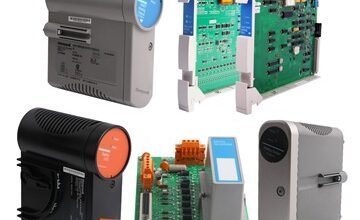From Hobbyist to High-Quality: Mastering 3D Printing with the Right Filament

The journey into 3D printing often begins with a sense of wonder, turning digital designs into tangible objects on your desktop. As your skills evolve, so too does the desire for professional-quality prints – objects with smooth surfaces, intricate details, and robust functionality. While printer calibration and slicer settings are crucial, the often-underestimated key to achieving this level of refinement lies in the selection of the right 3D printer filament.
The Filament Factor in Professional Results
Think of your filament as the raw material for your masterpiece. Just as a sculptor chooses specific clay for its texture and strength, a 3D printer relies on filament with consistent properties to produce high-caliber results. Inconsistent diameter, impurities, or poor material quality can lead to a range of issues that detract from a professional finish, including:
- Layer inconsistencies and visible lines: Resulting in a less smooth surface.
- Weak or brittle parts: Compromising functionality and durability.
- Stringing and blobs: Marring the surface with unwanted artifacts.
- Inaccurate dimensions: Affecting the precision and fit of parts.
Choosing Filaments for Professional-Grade Output
Stepping up your print quality often involves moving beyond basic filaments and exploring materials engineered for specific properties and finer detail. Here are some filament types that can help you achieve more professional results:
High-Quality PLA:
While PLA is beginner-friendly, premium PLA formulations often boast tighter tolerances in diameter and fewer impurities. This consistency translates to smoother extrusion and more reliable prints with better surface finishes. Look for PLA labeled as “professional” or “precision.”
PETG for Strength and Smoothness:
PETG offers a compelling combination of durability and a smoother surface finish compared to standard PLA. Its excellent layer adhesion contributes to stronger parts that can withstand more stress, making it suitable for functional prototypes and end-use parts requiring a polished look.
ASA (Acrylonitrile Styrene Acrylate):
The Outdoor Professional: For parts intended for outdoor use or environments with UV exposure, ASA is a superior choice to ABS. It offers similar strength and durability but with significantly better UV resistance, preventing yellowing and degradation over time. This makes it ideal for architectural models, outdoor signage, and durable enclosures.
Nylon (Polyamide):
Engineering-Grade Performance: When strength, durability, and even some flexibility are paramount, nylon filaments excel. They offer excellent abrasion resistance and can withstand significant stress. While printing nylon can be more challenging (often requiring higher temperatures and an enclosed printer), the resulting parts are often of true engineering quality.
PC (Polycarbonate):
High Strength and Temperature Resistance: For applications demanding exceptional strength and high-temperature resistance, polycarbonate is a top contender. It produces very durable parts suitable for demanding environments.
Factors Beyond Material: Ensuring Professional Prints
Choosing the right filament is just one piece of the puzzle. To consistently achieve professional-quality prints, consider these additional factors:
- Filament Diameter Consistency: Ensure your chosen filament has a tight diameter tolerance (e.g., ±0.02mm). Inconsistent diameter can lead to over or underextrusion.
- Proper Storage: Moisture can significantly degrade filament quality, leading to brittle prints and extrusion issues.
- Printer Calibration: A well-calibrated printer is essential for accurate and consistent extrusion. Regularly calibrate your E-steps, flow rate, and bed leveling.
- Slicer Settings Optimization: Experiment with slicer settings like layer height, print speed, retraction, and cooling to fine-tune the surface finish and dimensional accuracy of your prints.
- High-Quality Hardware: Investing in a 3D printer with a stable frame, reliable extruder, and precise motion control system will significantly impact the quality of your output.
Elevating Your 3D Printing Game
Moving from hobbyist prints to professional-quality results is a rewarding journey. By understanding the crucial role that filament choice plays and paying attention to other key aspects of the printing process, you can consistently produce objects that are not only functional but also visually impressive and built to last. The right filament, combined with careful technique, is your key to unlocking the true potential of your 3D printer. What filaments have helped you achieve your best 3D prints? Share your insights and tips for achieving professional quality in the comments below!




